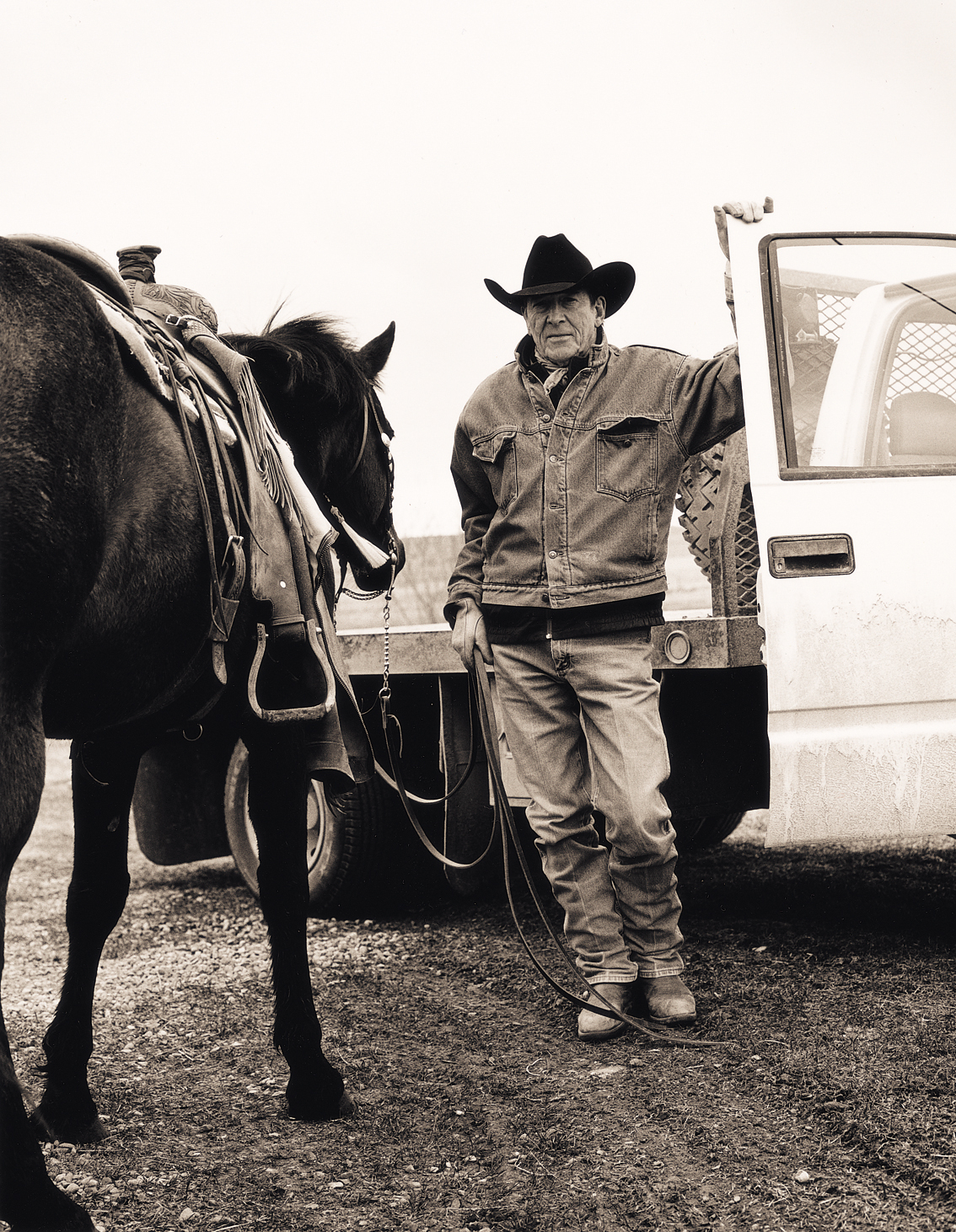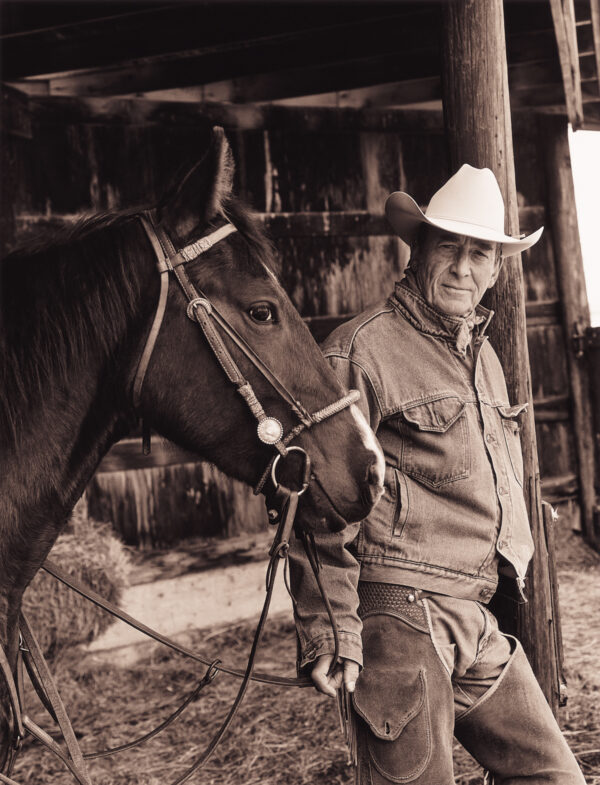
There are lots of articles written about Ian Tyson, the man and his life, but little has been said about the influence he has had on those he worked with, the music industry and the cowboy culture. At the beginning of the twentieth century, Montana artist Charlie Russell took a palette of vivid paint colours and used them to present captivating images of a vanishing Western lifestyle. Ian Tyson uses a palette of words and musical chords to create a vision of the history and rapidly changing lives of the modern-day cowboy.
In early 2018, the Association of Country Music in Alberta inducted Ian Tyson into the Alberta Country Music Hall of Fame. During his induction speech, Tyson said, “Country music has been a long and arduous, but fun, journey. I think the first country song I heard was Roy Acuff singing ‘Wreck On The Highway.’ It was real spooky. I think I was five years old. There was blood and twisted metal… all good things in the old country vein. I could really respond to it; it was great.” The imagery of the song left an impression so lasting that he was able to recall it 80 years later. Perhaps that’s why he writes and records songs that draw the listener in, to the point where they can visualize what he is singing about. This is something he has done consistently at the highest level for six decades, and he is still writing.
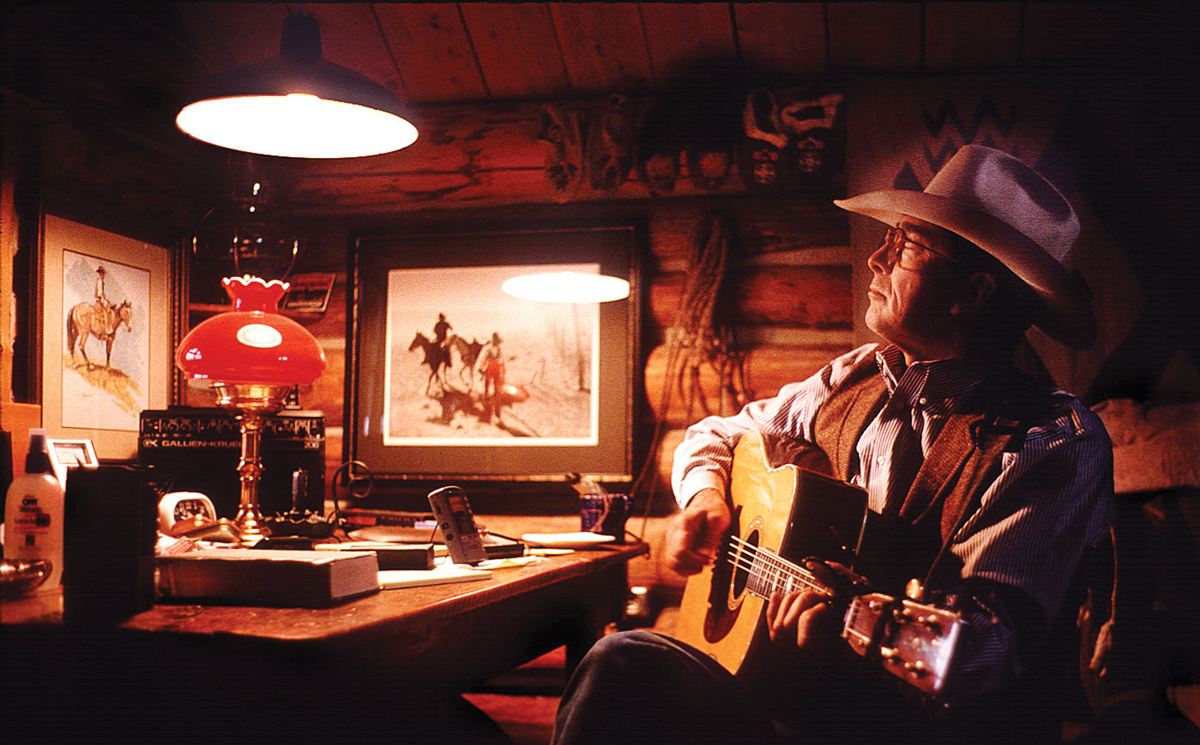
Ian Tyson has always been known and respected as a hard-working professional, who gives his all in everything that he does — be it writing amazing songs, giving spellbinding concerts or living the cowboy life. For those who share that work ethic and who were lucky enough to become a member of his band, it has yielded a lifelong career in the music business. Having Ian Tyson’s name on your resume is one of the highest honours a musician can have.
Myron Szott
Fiddler Myron Szott reminisced, “I was working with Wayne Vold at Ranchman’s in Calgary around 1980 when I first met Ian. When Ian hosted the CFRN Edmonton television series, Sun Country, from 1982 to 1987, he asked me to play fiddle on the show. That led to working in the studio on his ground-breaking album, Cowboyography. Since I had done so much with Ian already, Ian told me I might as well be part of his travelling band, a job which lasted six or more years.” This cemented Myron’s legacy as a fiddler, and he has never been without work since.
Jeff Bradshaw
Steel player Jeff Bradshaw says, “I was about 20 years old when I came from B.C. to perform with my Jericho Hill Band at Mad Trappers in Calgary. My entire, almost-40-year career as a working musician all hinges on the day Ian Tyson walked in and listened to us play. I guess he was looking for a band at the time because he hired us, and I got the gig. I ended up working for Ian for the next several years. He was a hard-working perfectionist. What I learned from him was that when working with a vocalist, to listen to the vocalist and not step over the vocalist — ever. He had such a commanding stage presence. My eyes were on him all the time, and as soon as he was done singing, he would let me play. It didn’t matter what was on the album, he encouraged me to play as myself and develop new techniques and styles. He just wanted to hear good music. That is how I have played ever since. Those types of credentials are worth more than all the musical degrees in the world when it comes to employment.”
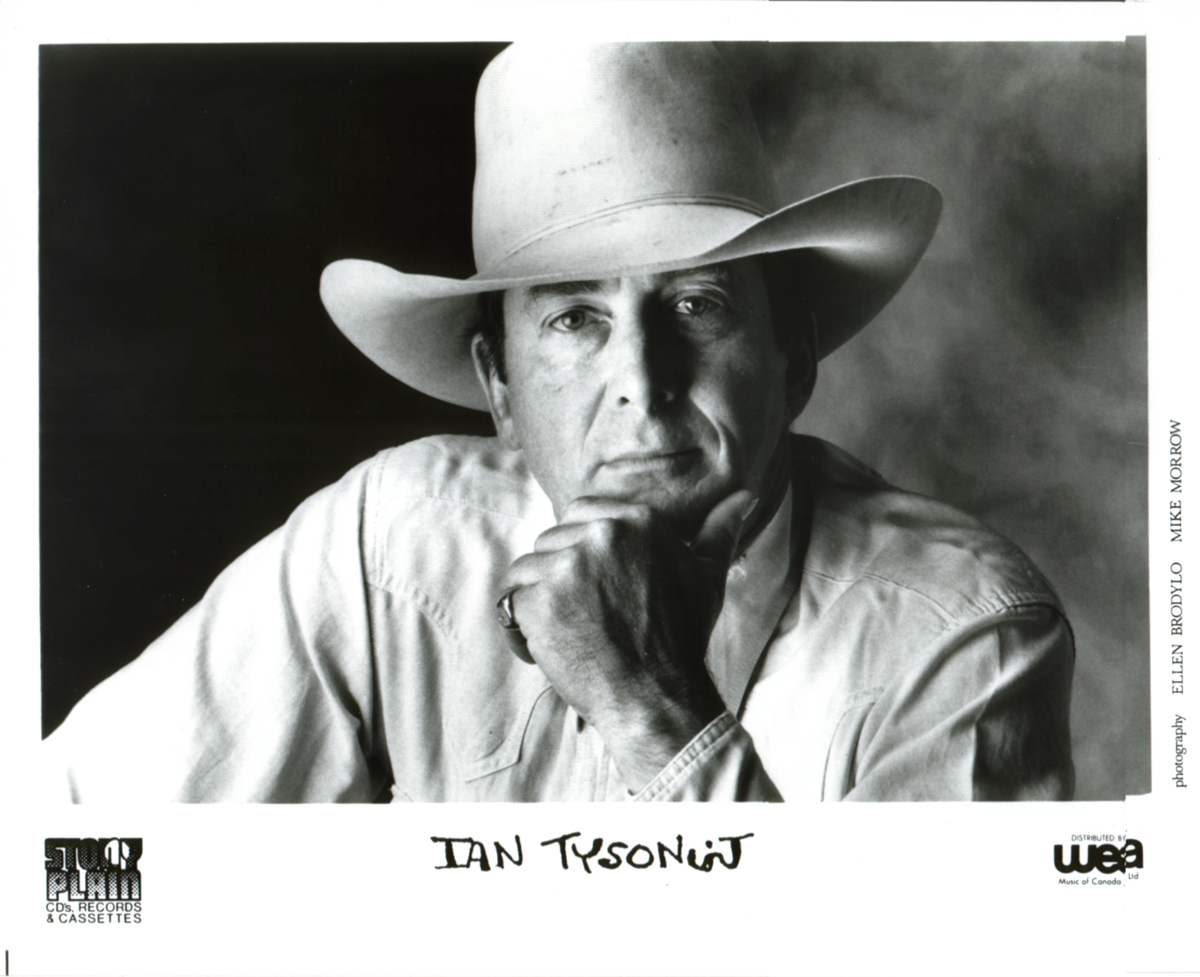
Gord Matthews
Guitar player Gord Matthews was originally hired by Tyson to play five or six dates. This led to 10 years playing with him on the road, first as part of a full band and later as a trio consisting of Ian, Gord Maxwell and himself.
“Over that 10-year period, especially when there were just the three of us on the road, I have a wealth of memories. We usually travelled in a van with me driving, Maxwell in the navigator’s seat, and Tyson in the back seat. As we travelled, especially in the southwestern U.S., Ian would regale us with stories of the colourful characters who had lived there and the history of the early Spanish missions and other sites that we passed by. It was like being in a living documentary with Ian narrating. Time would just fly by. Ian is an avid scholar of Western and cowboy history and has a large collection of rare books on the subject, which he often refers to when writing the history-based cowboy songs that he is famous for. One night when we stopped at a small ’60s style motel on the way to Phoenix, Ian and Gord were strumming guitars when I looked out the window to see a hillside of cactus with vultures flying in a circle above. I thought, ‘You can’t get any more Western than this.’ I just loved it and can still see it. I like a lot of different types of music, but it’s not too often you get to play music of that quality in any genre, and Ian’s was of the highest quality.”
Louis Sedmak
“I engineered and played guitar on the Cowboyography album and based on its amazing success we did two more albums together. One was I Outgrew The Wagon, and the third was And Stood There Amazed,” says Edmonton recording engineer and guitar player Louis Sedmak. “I also recorded all the music for the Sun Country television shows. Ian always knew exactly what he wanted and was always very direct in what he liked or disliked, which made it easy for me to achieve what was desired. He was always open to input and eager to experiment with various musical styles. Who else could write a story about magpies in a reggae style on a cowboy album and get away with it?
When the album was mixed and ready for final approval, Ian and I would drive around in his pickup truck, listening to it. Ian felt that his true audience was the working cowboy, and the cowboy’s listening theatre would be his pickup truck—not some fancy music room. I don’t believe there’s a cowboy on the planet who doesn’t know who Ian Tyson is. He has the ability to tell great stories in song and is a very entertaining storyteller at his live shows. His work will influence people for many years to come. It’s not a really dated sound, and they are such great story songs. The beauty of his songs is that you can listen to them with full production or pull all that away and just play them on an acoustic guitar by a campfire, and they sound equally great. That’s what makes a great song. The imagery he incorporates into his songs is amazing, and everything he writes has a positive spin to it. I always try to emulate his songwriting and melodic sense in all that I do.”
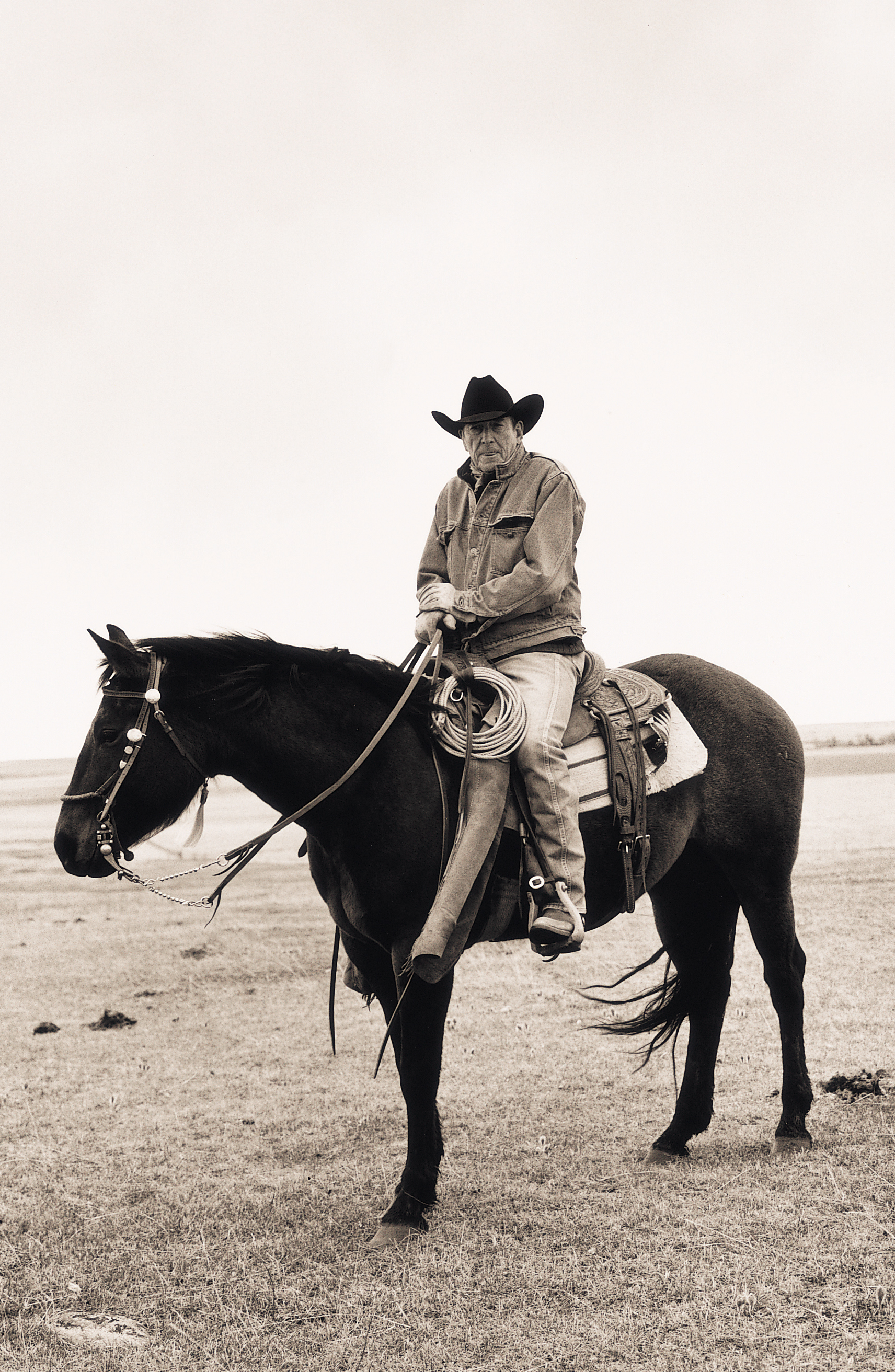
Holger Petersen
Holger Petersen of Stony Plain Records has been involved professionally with Ian Tyson since 1985. “Ian asked me if I’d be interested in releasing a final album for him, one just for his cowboy audience. He wanted to call that album Cowboyography. The album hit right at the time of the cowboy renaissance and became a huge hit, reaching platinum sales status and solidifying Ian as the greatest cowboy musical artist ever. The success of Stony Plain Records is largely due to Ian Tyson. He put my label solidly on the map, and I learned so much about the industry from him. It certainly didn’t turn out to be his last album, and all his subsequent 12 albums have been on our label. No matter where I travel I find that everyone knows Ian Tyson. Once in Australia, I was invited by an Australian record executive to a barbecue at his working cowboy ranch. When he introduced me to his cowhands as ‘the man who worked with Ian Tyson,’ all the cowboys were excited to ask questions, and I learned that every one of them were huge fans of his work.”
When Holger Petersen and Peter North produced The Gift, A Tribute To Ian Tyson, in 2007, they found that everyone they asked was honoured and eager to cover a Tyson song. The result was a 15-song album of different artists putting their spin on an Ian Tyson classic. “Ian has had a great influence on the Texas music scene too,” continues Petersen. “Songwriters like Townes Van Zandt and Warren Zevon were great fans of his. When he went to Nashville he influenced a lot of people there. Did you know that Ian was responsible for the success of Gordon Lightfoot? Ian advocated for him to his New York management, Albert Grossman, and a deal was struck. Ian shared many experiences with Bob Dylan in Greenwich Village, New York, in his early folk days, and Dylan has recorded a couple of Ian’s songs on his boxset album…” The stories go on and on. “Ian is one of the hardest working professionals I know, and his standards are incredibly high.”
Horizon Stage
Brandi Watson, Theatre Manager for the Horizon Stage in Spruce Grove, Alta, is proud of the fact that since 1990 Ian has performed 48 shows on their stage, and they have all been sellouts — despite the fact that many of them took place in mid-January on some of the worst winter nights the area has experienced. “Last year I had a call from a gentleman in the States desperately seeking tickets to Ian’s show so that he could bring his wife here for their 50th wedding anniversary. Although we were sold out I was able to make it happen, and they were so grateful as they are huge Ian Tyson fans. I truly admire Ian’s ability to make non-country people understand and appreciate what life on the land was like from his point of view. Even when his voice was failing, the audience continued to come, knowing they would still hear a really good story. In the 35-year history of the theatre, nobody has played here more than Ian Tyson.”

Spruce Grove
Don Waddle, the Technical Services Coordinator for the City of Spruce Grove, has worked on every one of Ian’s shows at the Horizon Stage. “The way he commanded the stage and worked with everyone was so professional. From the big band shows to those with just two sidemen, it has always been a joy to work with him. Ian always wants everything to be perfect, and even on occasions where he had several shows in a row, he would come in daily to rehearse and perhaps try new ideas. I was so honoured to be asked by him to work on a few shows in other parts of the province as well.”
Stewart MacDougall
“Ian invented a whole genre of music, bringing the sensibilities of folk music, where the songs mean something, and marrying it to western dance music,” says keyboardist Stewart MacDougall. “We had been touring soft seat theatres with our show, but when we got to Duchess, Alta., we found out that we were supposed to be playing for a dance. We played exactly the same set we would do in a theatre, and the dance floor was packed all night. You could waltz, two-step or shuffle to every song we played. Ian writes in everyday language, but he is also highly literate. After Cowboyography his writing became so prolific that he couldn’t fit all the songs in his set list. I composed the words for “Yellowhead to Yellowstone” and took them to Ian, who wrote the melody. I have seen his bare writings and been amazed at how he put them into song. As Ian’s voice has changed, in essence his songs have remained the same, but as he plays them now, they are totally different.”
Corb Lund
“Ian Tyson taught me that it’s OK to sing about your own region, especially if you incorporate the Rockies,” says Corb Lund. “I first met Ian when I was performing on The Gift tribute show in Calgary. Ian approached me and said he had been listening to my Five Dollar Bill album and liked what I was doing. Since then we have become good buddies. Not only has he mentored me as a writer, but he has also opened many industry doors for me, including introducing me to the cowboy culture in Elko, Nevada. He has allowed me to understand where my own background and culture came from. Ian sang with me on my recording of “The Rodeo’s Over” and has been very publicly supportive of what I am doing. We have done many shows together both in Canada and the U.S. Ian is a legend all over the western states. His endorsement has really helped my career. Even last night I was doing a show in Texas and someone asked for an Ian Tyson song.”
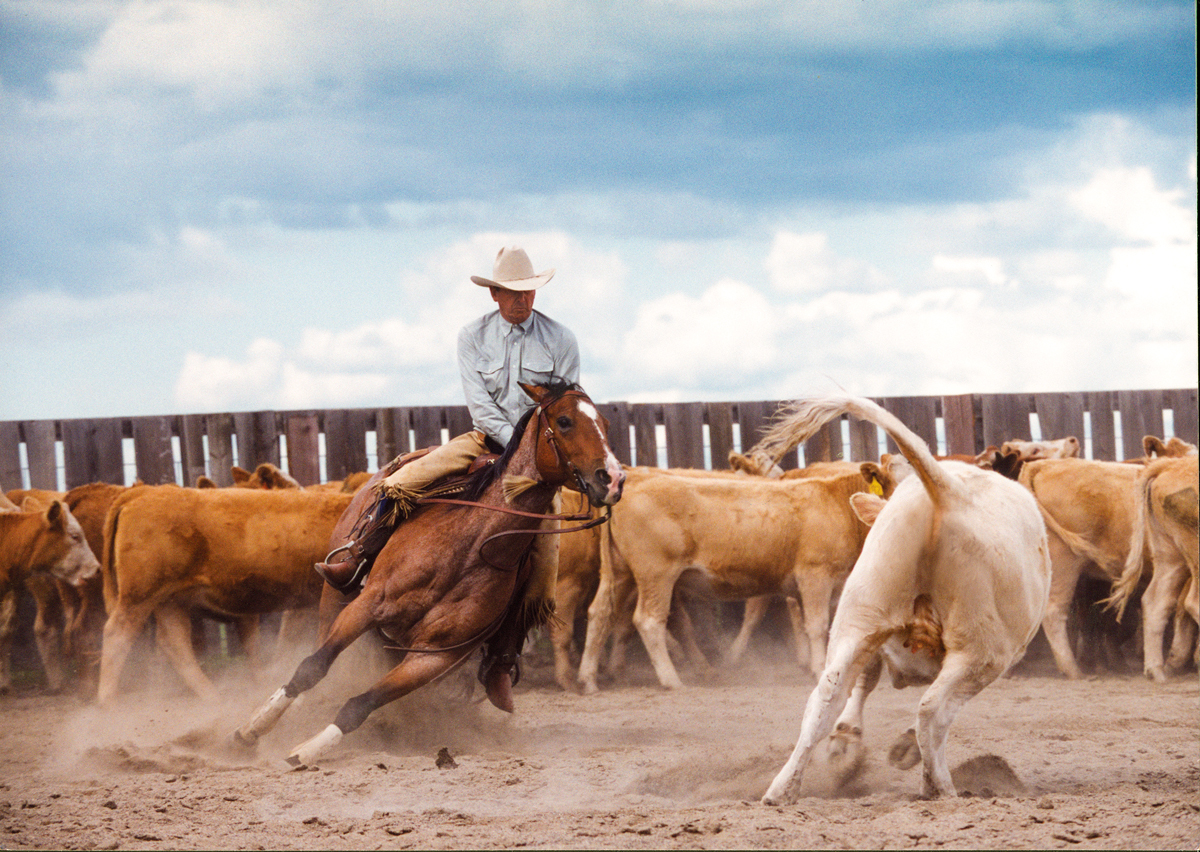
Eli Barsi
“I’ve been a fan of Ian’s right back to the powerhouse duo, Ian & Sylvia,” states cowgirl singer Eli Barsi. “His writing is so vivid, and he paints pictures with every single line, so you see the story unfolding in the song. I try to base my own writing on Ian’s style. I first met Ian when I was singing “Four Strong Winds” at a Calgary Stampede event at the OH Ranch. Ian walked by and said, ‘Great song.’ Later on, during a break he graciously invited me to join him at his picnic table and surprised me by agreeing to join me in a song. I have met him many times at various cowboy festivals all over the U.S. He is a huge draw there and has always cheered me on. Whenever I sing “Four Strong Winds” internationally, everyone knows it.”
Bruce Good
“We first met Ian when we were on the Festival Express, the train that toured across Canada in 1970. At the time we were James and The Good Brothers,” says Bruce Good. “Ian was the real deal cowboy. He had a ranch at Whitby, Ontario before coming west. We appeared on his television show a couple of times. Ironically the Festival Express may have been what moved Ian into recording cowboy songs. Buddy Cage, who was a member of Ian’s Great Speckled Bird country rock band, left the group and headed to the US after the tour. Ian has always been one of Canada’s most prolific songwriters. We always perform “Summer Wages” at all our shows and were hugely honoured to perform it on The Gift tribute album.”
Allen Christie
“Listening to Top 40 country radio was never a priority of mine,” divulged Allen Christie. “Growing up in a rural area riding horses and living the Western lifestyle, I first became interested in the songs of Wilf Carter. Then I heard Ian Tyson, which took it to another level for me. Shortly after being exposed to that I started writing, always using Ian’s music as sort of a touchstone.”
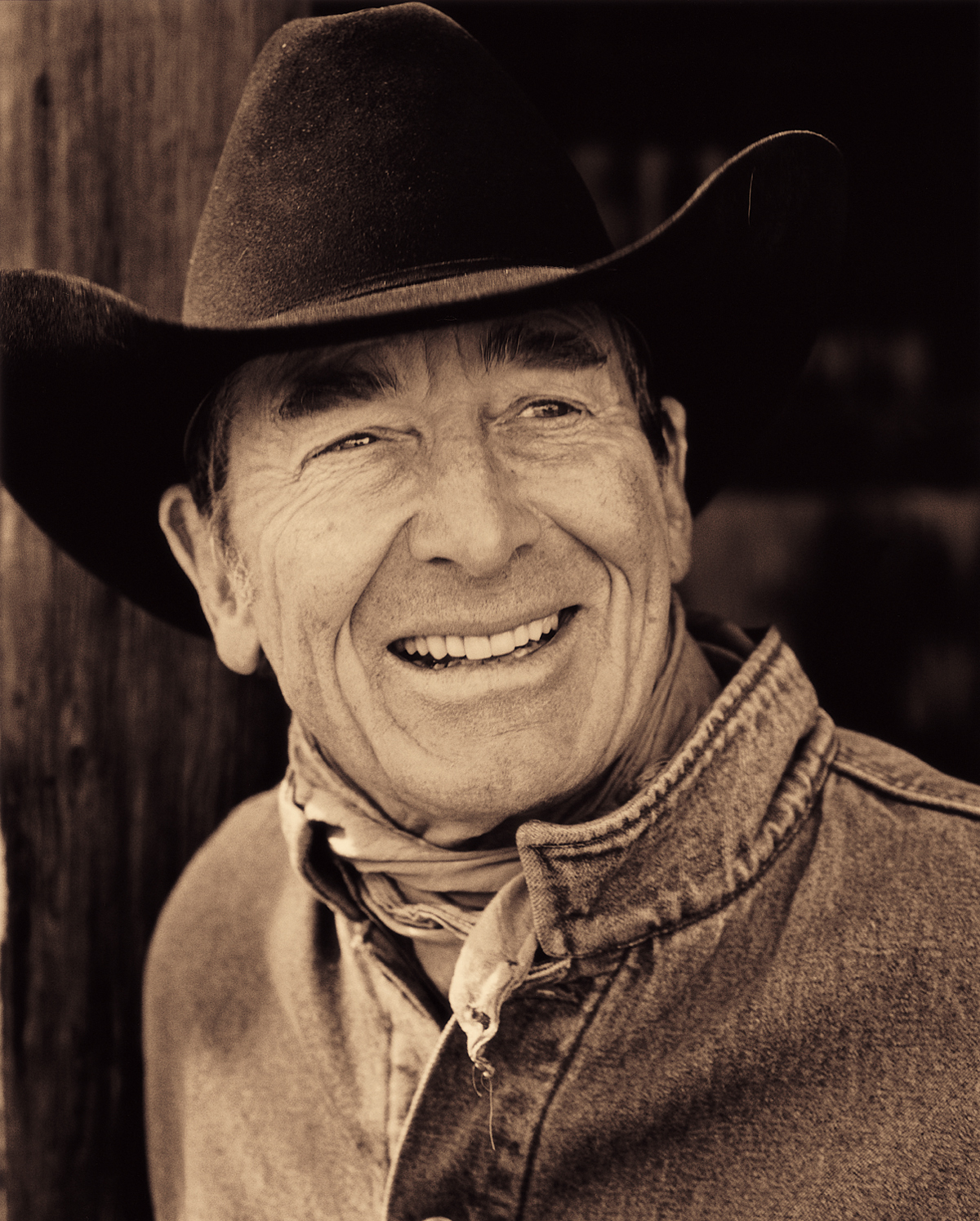
Tim Hus
“I moved to Alberta from B.C. because Alberta is the home of Ian Tyson and the Calgary Stampede, and I felt that if I wanted to be a cowboy singer, that’s where I should be,” says Tim Hus, the man who Stompin’ Tom Connors endorsed as his successor. We had Ian Tyson’s book, I Never Sold My Saddle, in our school library. That was kind of neat because it had the songs and chords in there and also the stories. My name appeared on the checkout card several times. I always liked country storytelling songs and listened to Ian Tyson’s albums endlessly, and I always saw that Stony Plain Records logo on the albums. I came out to Alberta in 2003 and, ironically, five years later I was signed to Stony Plain Records, the same label that Ian Tyson is on, a dream come true. I personally think he’s not just an influence on myself, his name and his contribution to Western music are actually synonymous with Alberta. You can’t even think about Alberta and the Rocky Mountain West without thinking about Ian Tyson. To me the biggest event in Alberta music is when Ian Tyson releases a new album.”
“I had the opportunity to work with famed Nashville producer Harry Stinson, who is also the drummer in Marty Stuart’s band,” continued Tim. “At one time Ian had gone down and done an album with him too. I was asking Harry what it was like working with Ian. He said all the Nashville musicians knew and really respected him and were excited to play with him. He’s actually a much bigger star than we give him credit for. In Alberta you just get used to him as the guy who lives down the road that you could stop in and visit. He’s really at the top of everyone.”
Ivan Daines
Rodeo cowboy and singer Ivan Daines first saw Ian & Sylvia perform in Ponoka when he was a young teenager. “I first met him when Marty Woods and I were riding at the Fort Worth Rodeo. I think Ian was there in a cutting horse competition at the time. I’ve listened to his music since I was very young. He’s got a great way of writing and a great way of bringing a song around. I don’t think there’s anyone like him in the world,” Ivan stated. “In my opinion, Ian was the greatest singer and songwriter I’ve ever known.”
R. Harlan Smith
R. Harlan Smith, the founder of Royalty Records, has known Ian in the music business for many years, back from the days when Wayne Vold was on his label. “Ian was always his own guy,” he noted. “He knew what he was doing. He never changed, and he was always true to himself. He’s a musical genius on how he can put things together and how he can relate them. The influence he had on country music is that he took country music and folk music and he melted that with other traditional music. If you listen carefully, you’ll hear little intricacies that come from a background of different music styles. Even when his voice was gone, he still got standing ovations, and well he should for he is a national treasure.”
Editor Terri Mason summed it up well for me stating, “Ian has been able to live his art, and he has always ridden his own horse.” And he has done it all very well. Ian has constantly been able to alter his songs to meet modern tastes and a changing voice — and Ian Tyson stands alongside Charlie Russell, both revered in the cowboy world.
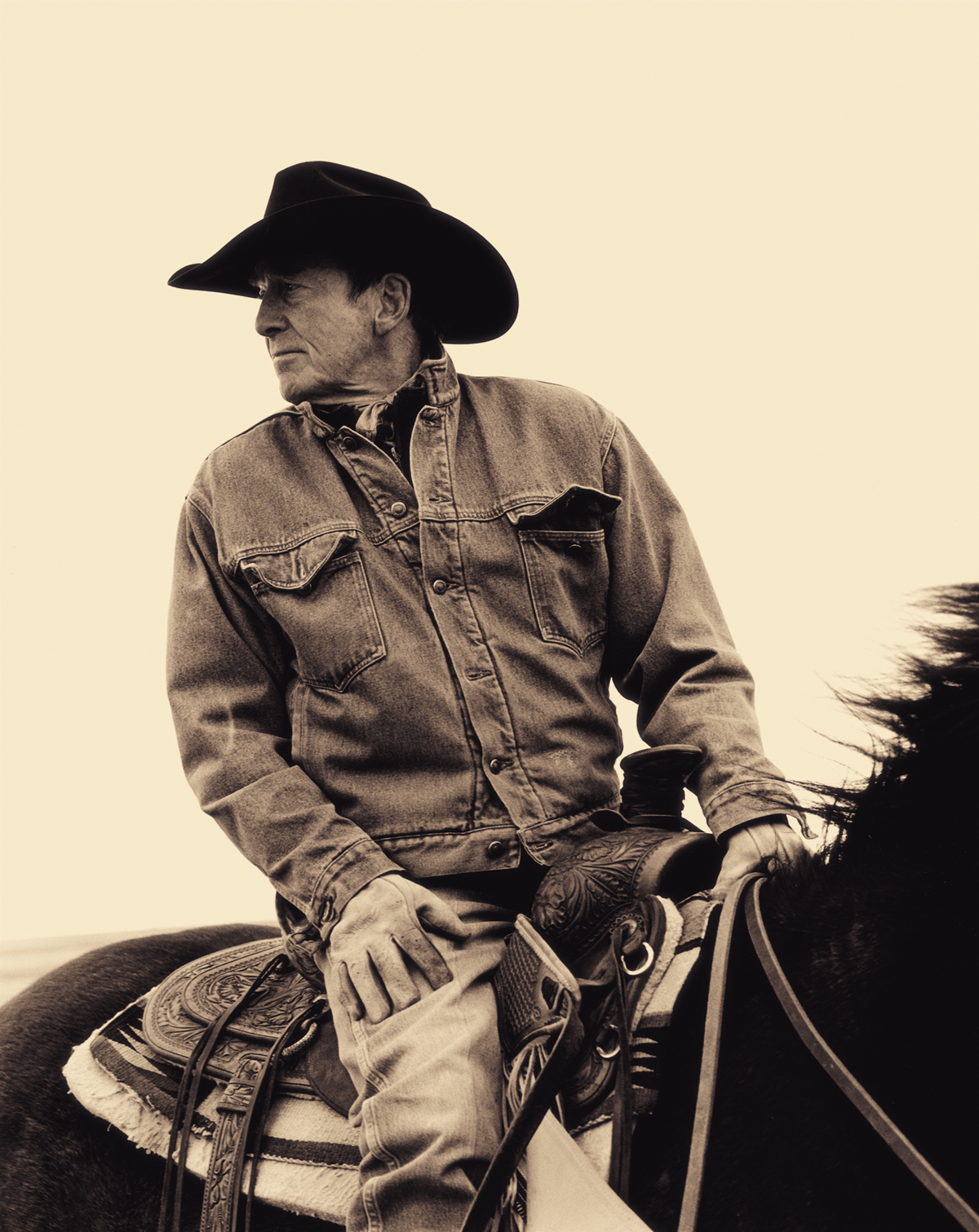
Four Strong Winds
There is a reason everyone knows “Four Strong Winds.” Unbelievably, it was the first song Ian ever composed back in 1961. In 2005, CBC Radio One listeners chose this song as the greatest Canadian song of all time. “The song has been recorded more than three dozen times by other artists,” according to Larry Delaney, Canadian country music historian and publisher of Country Music News for 36 years. “Both Bobby Bare and Neil Young had big hits with it in the U.S. and it’s become a national classic, but “Someday Soon” has had more actual chart action because it was recorded by more Nashville artists, including Suzy Boggus and Moe Bandy.” When Emmylou Harris and Steve Early played concerts in the Calgary Saddledome in recent years, both ended their concert with “Four Strong Winds,” and the song is always performed as the finale at the Edmonton Folk Music Festival.
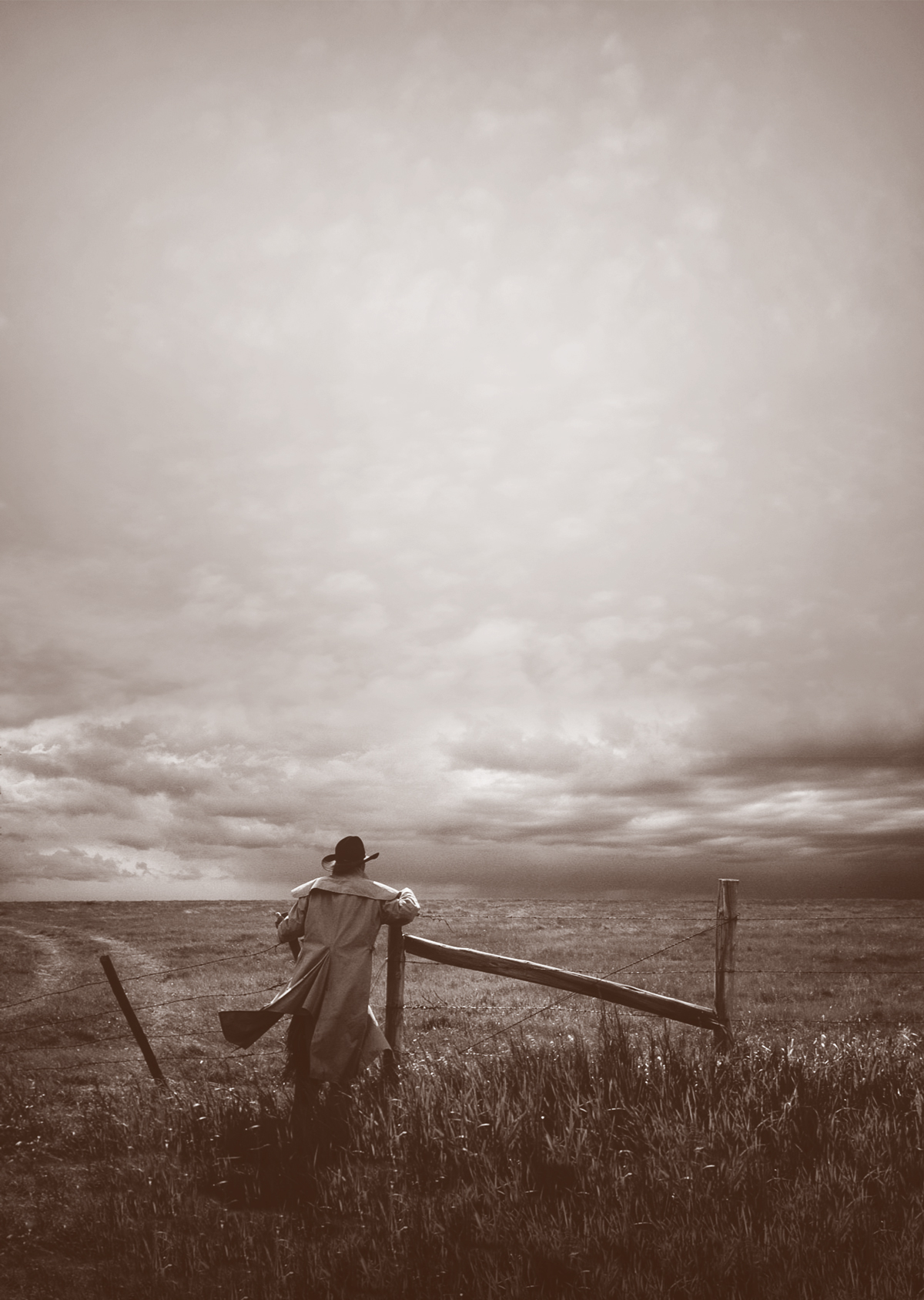
HUS, Bradshaw & Tyson
“All those really big American songwriters, like Guy Clark, Jerry Jeff Walker and all of them from that era, know who Ian is, and they put him up really high on a songwriting pedestal and also a vocal pedestal for how well he could sing.” — Tim Hus and Jeff Bradshaw
Listening in the Pickup
“A well-established rancher out of Wichita, Kansas, travelled to Argentina to study ranching techniques there,” recalls Gord. “His area guide only had two cassette tapes in his pickup — both by Ian Tyson. The rancher was so impressed by Ian’s music that when he got back home to Kansas, he tracked Ian down and hired us to play his 50th wedding anniversary.” — Gord Matthews
FBI
It seems like even the FBI listened to Ian Tyson songs. Gord Matthews recalled the story he was told about the year when the fugitive, Claude Dallas, was on the run. “The FBI had a tip that Claude might be headed to the Elko Cowboy Gathering to hear Ian sing his song. The FBI agents were stationed in the crowd dressed up as cowboys. Of course, in a real cowboy crowd you could spot the store-bought cowboys a mile away,” says Matthews.
Legendary Music
For the full list of Ian Tyson’s music, books and DVDs, visit his official website.
